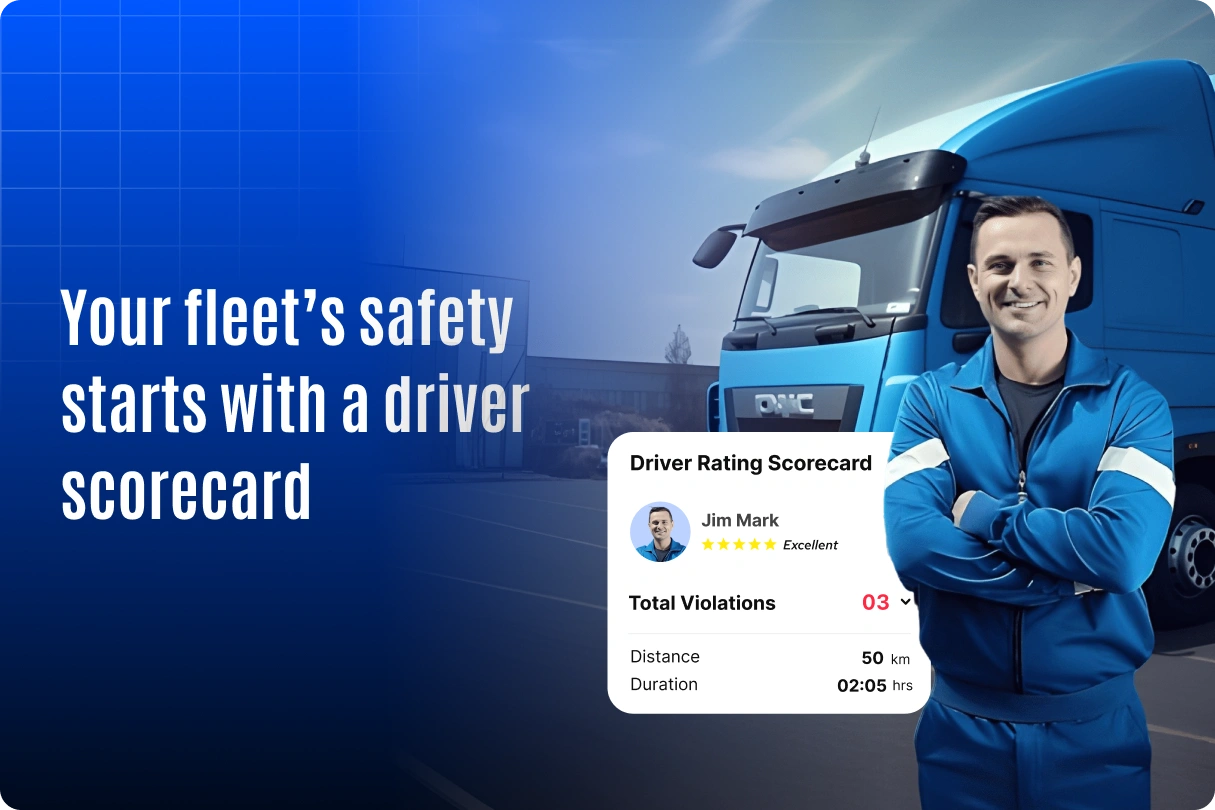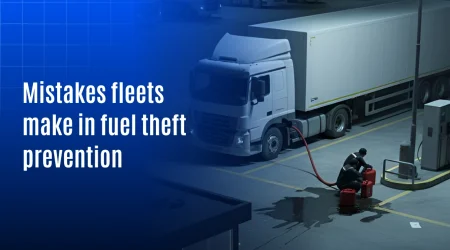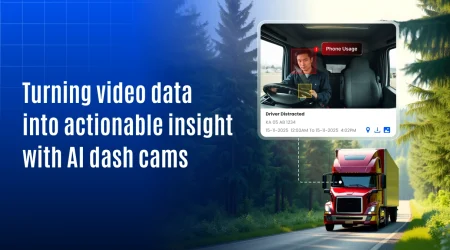Why Driver Scorecards Are the Secret to Reducing Fleet Accidents

Even if you are a small fleet owner or have multiple fleets to manage, safety is your first priority. To maintain safety, you need visibility — not just whether the vehicles are on the right road, but how drivers handle the vehicle. That’s why fleets today rely on driver scorecards.
These scorecards give managers a clear picture about how each driver performs on the road. Instead of relying on manual work, managers can now identify risks, promote safe habits and reduce accidents. It’s a smarter way to improve performance and keep both drivers and assets protected everyday.
What Are driver scorecards?
A driver scorecard is a simple report that shows how safely a driver operates a vehicle.
It collects data from telematics devices and rates drivers based on:
- Over-speeding
- Harsh braking or acceleration
- Sharp cornering
- Long idling
- Seatbelt use
Each driver receives a score — green for safe, amber for average, and red for risky behaviour. With the Driver Behaviour Monitoring System, fleet managers can easily identify unsafe drivers and take early action before accidents happen.
Why fleet managers rely on driver scorecards
Driver scorecards help managers do more than monitor — they help build better teams.
Managers can:
- Compare driver performance within fleets.
- Receive instant alerts for unsafe driving habits.
- Schedule a training programme for drivers for their safety.
- Recognise top drivers to inspire better performance.
Together, these actions help managers move from simple monitoring to meaningful improvement — shaping a culture of safety across the fleet.
How driver scorecards help reduce accidents
Driver scorecards don’t just track numbers – they measure real driving behaviour. They help fleets build a strong safety culture by turning every trip into a learning opportunity.
Here’s how they reduce accidents step-by-step:
- Data collection: They gather data from GPS, sensors and telematics devices.
- Insight generation: The system analyses risky behaviour like speeding or harsh braking and guides them further.
- Feedback & coaching: Drivers receive feedback and training.
- Behaviour change: Track driver improvements that change over time.
- Fewer accidents: Improved awareness leads to fewer crashes and lower costs
With this process, fleets become proactive — preventing accidents instead of reacting to them.
Real impact on fleet operations
Driver scorecards don’t just improve safety; they also bring clear business benefits.
- Fewer accidents: Reduce breakdown and costs.
- Better fuel economy: Driving safely saves fuel.
- Less maintenance: Careful driving extends vehicle life.
- Higher productivity: Drivers complete their trip without delay or accidents.
- Lower insurance costs: Insurance companies reward fleets that maintain safety standards.
Best practices to get the most from driver scorecards
To make driver scorecards successful:
- Be open: Tell drivers what is being tracked and why.
- Coach instead of punish: Use scorecards to help drivers improve.
- Recognize top drivers: Encourage good habits with rewards.
- Customise: Adjust scoring based on vehicle type and routes.
- Review results : Keep track of progress and update regularly.
When done right, scorecards promote teamwork and a strong safety culture.
AI and video telematics make scorecards smarter
Modern driver scorecards use AI and video telematics to detect even more details.
For example, the system can now identify:
- Lane deviation
- Unsafe following distance
- Mobile phone use while driving
- Driver distraction or drowsiness
With video integration, managers can review incidents with real footage — not just data. This helps prevent accidents, protect drivers, and settle insurance disputes faster.
The future of fleet safety
Fleet safety is becoming smarter and more data-driven. With advancements in telematics and AI, driver scorecards are evolving from simple tracking tools to predictive systems that identify risks before accidents happen.
AI-powered cameras will analyse driving patterns in real time and alert drivers instantly about unsafe behaviour. Video telematics will also help managers review events quickly and make fair, informed decisions.
In the coming years, fleets can expect:
- Predictive safety alerts based on driver performance trends.
- Gamified dashboards that encourage safe driving habits.
- Integration with EVs and ADAS for unified safety tracking.
By combining telematics and AI, driver scorecards will become the backbone of a proactive fleet safety ecosystem — helping fleets prevent accidents rather than respond to them.
Summary
Fleet safety today is not just about avoiding accidents — it’s about building awareness and responsibility on every trip. Driver scorecards turn driving data into clear insights that save lives, reduce costs, and make fleets more efficient. Managers who use these tools don’t just get reports they gain real control and confidence in how their fleets operate. When drivers know their performance is valued, they drive better, stay safer, and protect both vehicles and business. Because in the end, safer driving protects more than your fleet — it protects your future.




